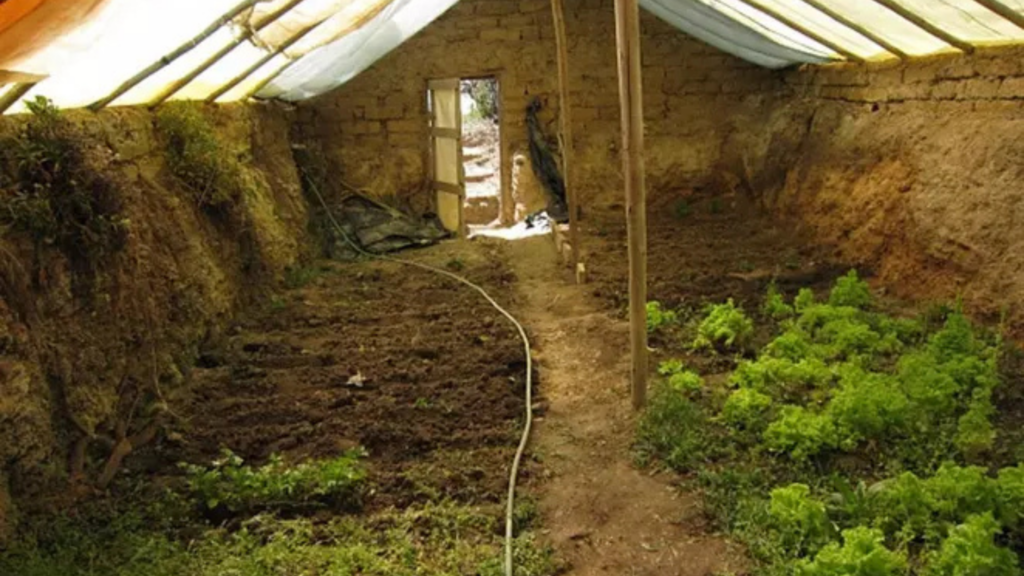Creating a Walipini greenhouse offers an innovative solution for growing food throughout the entire year. This underground greenhouse harnesses the natural insulation properties of soil, ensuring optimal conditions for your plants, despite external weather changes.

One of the main advantages of an underground greenhouse is thermal stability. Just a few feet beneath the earth’s surface, the soil maintains a relatively constant temperature, ensuring that your plants aren’t subjected to the extreme fluctuations of winter or summer temperatures. Additionally, these structures provide excellent protection from harsh weather elements like wind, snow, and hail, significantly reducing the risk of damage to your crops. This stable environment also extends your growing season, allowing for cultivation even during the colder months, and since less energy is needed for heating, it’s a more sustainable option in terms of energy use.
To maximize the benefits of your Walipini, selecting the right location is crucial. Aim for a site that receives maximum sunlight, ideally facing south if you’re in the Northern Hemisphere. Conversely, southern locations should be oriented towards the north. Additionally, ensure the area has good drainage to prevent waterlogging. Incorporating raised beds or gravel paths can aid in proper drainage and accessibility to your greenhouse year-round.
The construction of your underground greenhouse involves a few key steps. Start with excavation, digging approximately 2.5 to 3 meters deep to take advantage of the soil’s insulating properties; this depth may need adjustment based on your local frost line. A typical size might be around 3×6 meters, but feel free to customize according to your gardening needs.
Next, build strong walls using bricks, stones, or earthbags, reinforcing them with concrete if necessary. It’s also wise to insulate the north wall to retain heat; materials such as straw bales or foam insulation work well for this purpose. When it comes to covering your greenhouse, opt for UV-resistant greenhouse plastic, polycarbonate panels, or glass. Ensure the roof is sloped to enhance sunlight exposure and allow rain and snow to run off easily.
For flooring, a gravel base improves drainage, though you can also choose to use concrete or leave it as natural soil, depending on your preferences. Proper ventilation is essential, so include vents or windows in the roof to let hot air escape and maintain air circulation. Consider adding doors at both ends of the greenhouse for easy access and further air movement.
Maintaining your underground greenhouse requires regular monitoring of temperature and humidity levels. Installing a thermostat can help keep track of these factors. Due to the unique design, your greenhouse may be more susceptible to certain pests, so conduct regular inspections and utilize natural pest control methods. Adjust your watering schedule based on your plants’ needs, being cautious of overwatering, which can lead to drainage issues.
To enhance the functionality of your greenhouse, consider placing water barrels inside. These can absorb heat during the day and release it slowly at night, stabilizing temperatures. Using raised beds can also prevent water accumulation and root rot, while reflective surfaces inside can improve light distribution.
In conclusion, building a Walipini greenhouse is a rewarding and sustainable way to cultivate plants year-round. Despite the initial effort and investment, the benefits of producing fresh, homegrown food, even in colder months, make this project well worth the commitment. Happy gardening!


https://t.me/s/ef_beef
https://t.me/site_official_1win/36
https://t.me/dragon_money_mani/33